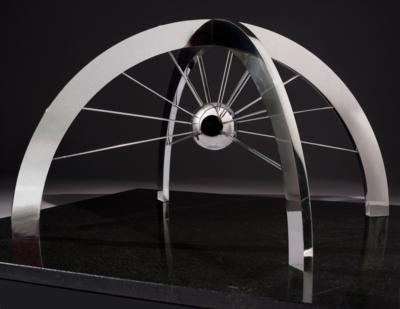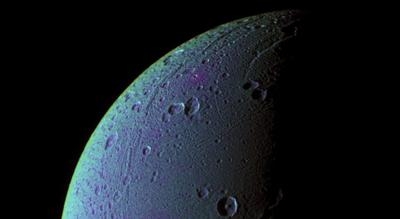Thu, Mar 15, 2012
Both Recognized For Work In The Aviation And Aerospace Fields
The Smithsonian Institute has announced the recipients of its 2012 National Air and Space Museum Lifetime Achievement and Current Achievement categories. Burt Rutan has been selected to receive the Lifetime Achievement award, while the Current Achievement trophy will go to the Cassini-Huygens Flight team. They will be presented their awards March 21 at a black-tie dinner in Washington, D.C.

"The winners of the 2012 Trophy Awards have challenged the established ways of thinking," said Gen. J.R. "Jack" Dailey, director of the museum. "Burt Rutan has inspired the aeronautical community to reach beyond the conventional for innovation and achievement; the Cassini-Huygens mission has changed our understanding of the Saturn system and contributed to our understanding of planetary systems' formation and evolution."
Established in 1985, the award recognizes outstanding achievements in the fields of aerospace science and technology and their history. As in past years, Trophy winners receive a miniature version of “The Web of Space,” a sculpture by artist John Safer (pictured).
Rutan has designed and built some of the most exciting machines ever to fly. His revolutionary lightweight, durable and efficient air- and spacecraft have broken numerous world records, including the first nonstop flight around the world without refueling (Voyager) and first privately developed reusable sub-orbital spacecraft (SpaceShipOne). To date, five Rutan aircraft are in the museum’s collections. Rutan’s companies—Rutan Aircraft Factory and Scaled Composites—have produced an eclectic range of homebuilt, research, civilian and military aircraft that have changed construction and engineering, solved specific aeronautical problems and captured the imagination of the aerospace industry and the world.

Arriving at Saturn in 2004, Cassini has been chronicling Saturn and its satellites and rings. From characterizing Saturn’s atmosphere and radiation belt, to imaging new faint rings, to detecting methane-carved stream-like drainage channels and lakes on Titan, to imaging geysers erupting from the south polar region of Enceladus, the discoveries made by this mission continue at a fantastic pace. The Cassini-Huygens team has far exceeded the planned primary mission duration and objectives, taking maximum advantage of this invaluable asset. Further, by careful management of spacecraft resources, the mission may continue for years, thus allowing the Cassini-Huygens Flight Team to answer scientific questions far beyond those conceived at the mission’s onset (Image of moon Dione from Cassini spacecraft courtesy of NASA).
More News
Aero Linx: International Federation of Airworthiness (IFA) We aim to be the most internationally respected independent authority on the subject of Airworthiness. IFA uniquely combi>[...]
Ultrahigh Frequency (UHF) The frequency band between 300 and 3,000 MHz. The bank of radio frequencies used for military air/ground voice communications. In some instances this may >[...]
A Few Questions AND Answers To Help You Get MORE Out of ANN! 1) I forgot my password. How do I find it? 1) Easy... click here and give us your e-mail address--we'll send it to you >[...]
From 2019 (YouTube Edition): Learning To Paint Without Getting Any On Your Hands PPG's Aerospace Coatings Academy is a tool designed to teach everything one needs to know about all>[...]
Also: Sustainable Aircraft Test Put Aside, More Falcon 9 Ops, Wyoming ANG Rescue, Oreo Cookie Into Orbit Joby Aviation has reason to celebrate, recently completing its first full t>[...]
 ANN's Daily Aero-Linx (05.06.25)
ANN's Daily Aero-Linx (05.06.25) ANN's Daily Aero-Term (05.06.25): Ultrahigh Frequency (UHF)
ANN's Daily Aero-Term (05.06.25): Ultrahigh Frequency (UHF) ANN FAQ: Q&A 101
ANN FAQ: Q&A 101 Classic Aero-TV: Virtual Reality Painting--PPG Leverages Technology for Training
Classic Aero-TV: Virtual Reality Painting--PPG Leverages Technology for Training Airborne 05.02.25: Joby Crewed Milestone, Diamond Club, Canadian Pilot Insurance
Airborne 05.02.25: Joby Crewed Milestone, Diamond Club, Canadian Pilot Insurance




